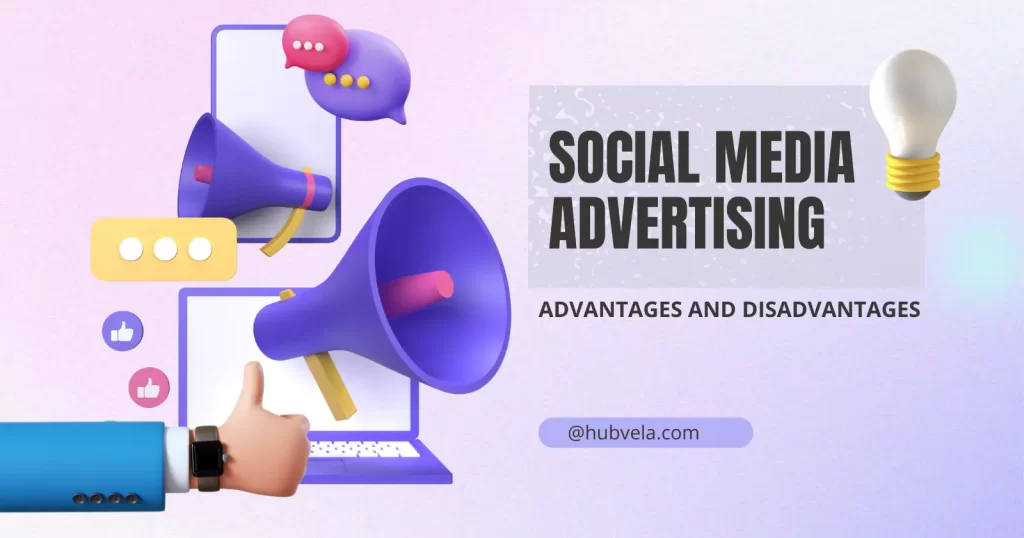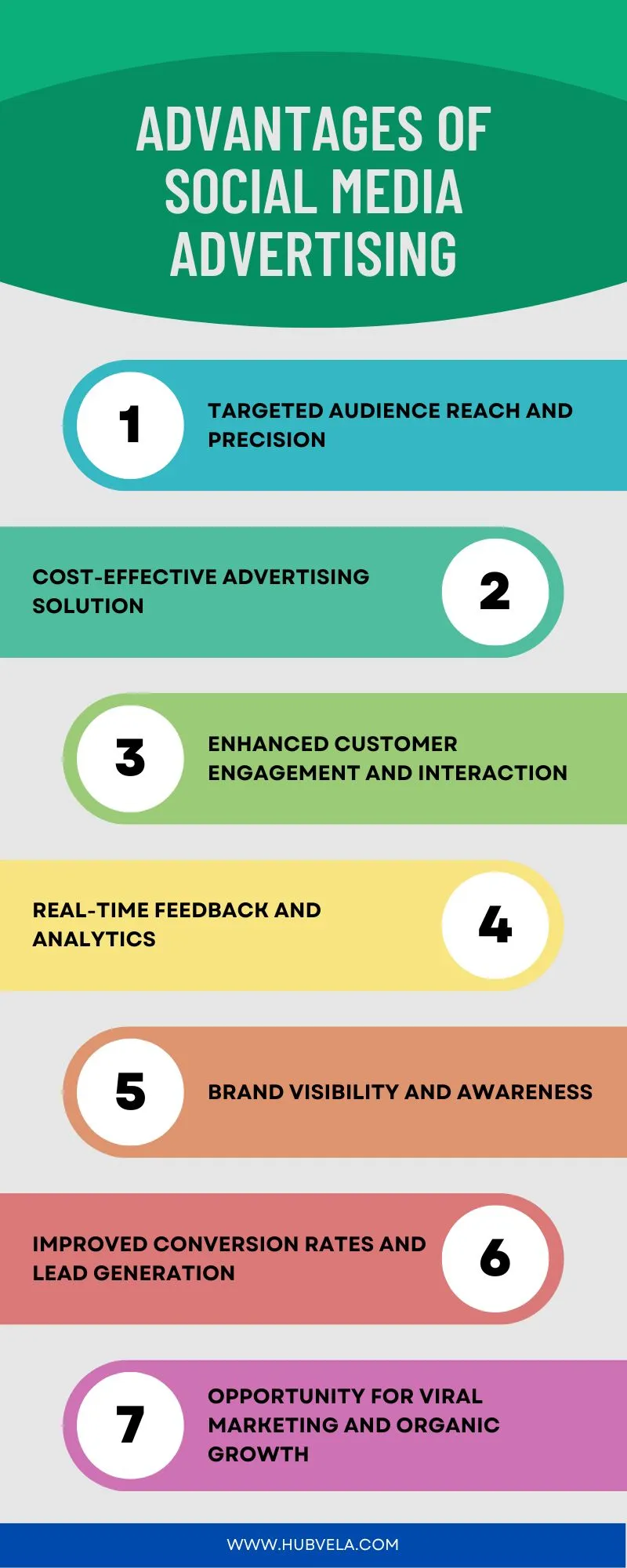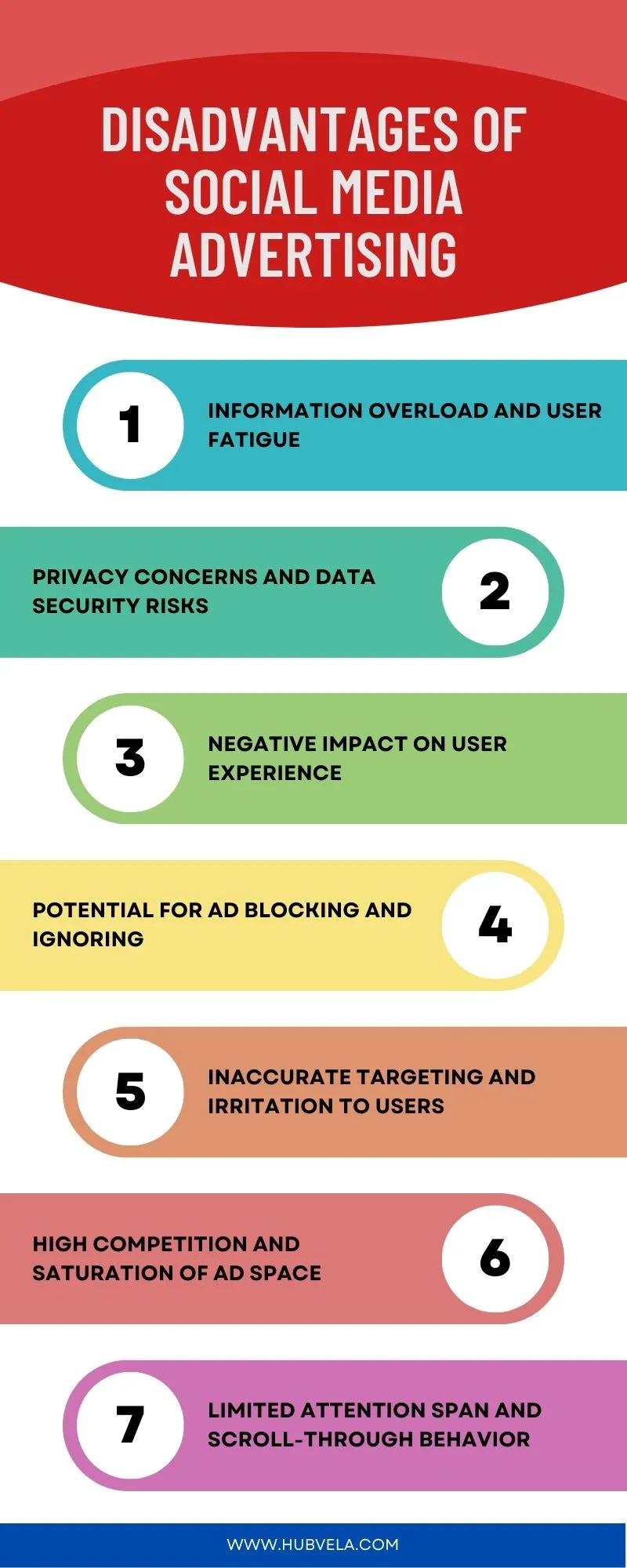Social media advertising has become an increasingly popular way for businesses to reach their target audience. With the rise of social media platforms, advertising on these platforms has become more accessible and convenient.
Social media advertising has its advantages and disadvantages, and it is important for businesses to understand both sides before deciding to invest in it.
In this article, we will explore the advantages and disadvantages of social media advertising. We will discuss the benefits of social media advertising, such as increased brand awareness, better customer satisfaction, and cost-effectiveness.
We will also examine the downsides of social media advertising, such as negative feedback, time-consuming campaigns, and lack of immediate results.
By the end of this article, you will have a better understanding of whether social media advertising is the right choice for your business.

--Advertisement--
Advantages of Social Media Advertising
Social media advertising has become an essential part of the marketing strategy for businesses of all sizes. It is a highly cost-effective way to reach a large audience and promote products or services.
Social media advertising has many advantages, including increased brand awareness, audience engagement, and greater control over marketing messages.
We will explore the advantages of social media advertising in detail and discuss how it can help businesses reach their goals and scale their operations.

1. Targeted Audience Reach and Precision
Social media advertising offers the opportunity to connect with your target audience and develop meaningful connections. One of the key advantages of social media advertising is the precision targeting it offers.
Advertising platforms such as Facebook Ads Manager and LinkedIn Campaigns Manager let you devise detailed audience targeting metrics for your ad campaigns.
By doing this, you can make sure that your social media ads are reaching people who are likely to have an interest in what you have to say or offer. Precision targeting can reduce advertising costs and increase conversions, making social media advertising cost-effective.
With precision targeting, businesses can create highly customized campaigns that are more likely to reach their target audience.
By reaching the right people with the right message, businesses can increase the likelihood that their target consumers will take the desired action.
2. Cost-Effective Advertising Solution
Social media advertising is a cost-effective solution for businesses looking to promote their products or services. Unlike traditional advertising methods, social media advertising allows for concise and targeted messaging.
With the ability to devise detailed audience targeting metrics, businesses can ensure that their ads are reaching people who are likely to have an interest in what they have to offer. This precision targeting not only reduces advertising costs but also increases conversions.
By reaching the right audience with the right message, businesses can maximize the effectiveness of their advertising budget. Social media advertising offers an affordable way to connect with your target audience and achieve real business results.
3. Enhanced Customer Engagement and Interaction
Social media advertising offers businesses the opportunity to engage with their customers in a more meaningful way.
By actively engaging with customers on social media, businesses can establish a two-way communication channel, gather valuable feedback, and build meaningful relationships with their audience.
Social media platforms provide opportunities for direct engagement with customers, which can lead to increased customer loyalty and brand reputation.
Social media engagement has a major impact on small businesses, affecting everything from brand awareness to customer loyalty.
Through social media communication, businesses can address customer problems quickly and efficiently, helping to create a loyal customer base.
By leveraging the power of social media, businesses can improve their marketing messages and customer satisfaction, increase brand awareness, and reach a wider audience, driving traffic to their website.
4. Real-Time Feedback and Analytics
Social media advertising provides businesses with real-time feedback and analytics. Social media analytics tools allow businesses to track a variety of metrics across different social media platforms, making it easier to compare performance across channels.
By analyzing these metrics, businesses can gain insights into their audience’s behavior and preferences, which can help them make informed decisions about their advertising strategy.
Social media analytics can also help businesses identify emerging trends and pinpoint market opportunities, minimizing risks and ensuring that their advertising budget is being used effectively.
Real-time feedback and analytics can help businesses adjust their advertising strategy on the fly, ensuring that they are reaching the right audience with the right message.
By leveraging the power of social media analytics, businesses can improve their marketing messages, increase customer satisfaction, and drive traffic to their website.
5. Brand Visibility and Awareness
Social media advertising is a great way to increase brand visibility and awareness. By promoting your business, products, or services across social media, you can increase brand awareness from the get-go.
Social media platforms allow businesses to build their visual identity across vast audiences, improving brand awareness. Social media advertising can also help reinforce your brand personality through new posts and paid ads.
By creating interesting, relevant content, businesses can increase visibility and reach a wider audience. Social media advertising is a cost-effective way to promote your products and services to millions of people at once, making it an ideal solution for businesses of all sizes and budgets.
By leveraging the power of social media advertising, businesses can increase brand awareness, reach a wider audience, and drive traffic to their website.
6. Improved Conversion Rates and Lead Generation
Social media advertising can be an effective tool for lead generation and improving conversion rates.
By leveraging social media platforms, businesses can target specific audiences with relevant content and promotions that encourage engagement and drive conversions.
Social media lead generation is highly beneficial for small businesses due to its wider reach and targeting capabilities.
With billions of active users on social media, businesses can easily reach out to their target audience based on demographics, interests, and behaviors, resulting in a higher chance of converting leads into customers compared to traditional marketing channels.
Social media advertising is also cost-effective compared to other marketing channels such as TV ads or print campaigns. By using social media advertising, businesses can improve their conversion rates, generate leads, and grow their customer base.
7. Opportunity for Viral Marketing and Organic Growth
Social media advertising provides businesses with the opportunity for viral marketing and organic growth. By sharing engaging and shareable content, businesses can expand their reach as users share and promote the brand on their own networks.
Social media platforms allow businesses to target specific audiences with relevant content and promotions that encourage engagement and drive conversions. This results in a higher chance of converting leads into customers compared to traditional marketing channels.
Social media advertising is also cost-effective compared to other marketing channels such as TV ads or print campaigns.
By leveraging the power of social media advertising, businesses can increase brand awareness, reach a wider audience, and drive traffic to their website.
Social media advertising can help businesses generate leads and grow their customer base, making it an essential tool for businesses looking to expand their reach and grow their business.
Disadvantages of Social Media Advertising
Social media advertising has become one of the most popular strategies for digital marketing. It offers many marketing tools to grow your brand, but there are also potential disadvantages that businesses should be aware of.
We will discuss the disadvantages of social media advertising. It is important to understand the potential hurdles before launching a social media advertising campaign.

1. Information Overload and User Fatigue
Social media platforms are filled with an overwhelming amount of information, making it difficult for businesses to stand out and reach their target audience.
Users may feel overwhelmed and tired due to the massive amount of information on social media, leading to social media fatigue.
Social media fatigue can result in decreased engagement, reduced productivity, and even burnout. Information overload can also lead to communication overload, which can negatively impact job performance and lead to exhaustion.
Businesses must be mindful of the amount and type of content they share on social media to avoid overwhelming their audience.
By creating relevant and engaging content, businesses can avoid information overload and fatigue, and ensure that their target audience remains engaged and interested in their brand.
2. Privacy Concerns and Data Security Risks
Privacy concerns and data security risks are significant disadvantages of social media advertising. Social media platforms collect personal information, along with interests and locations, from users by using tracking cookies, geofencing, and cross-site tracking.
Even if an account is private, advertisers and scammers can get sensitive data, such as personal information, likes, and dislikes. Social media companies collect personal information and make it available to marketers, which can put user information at risk.
Social media users are concerned about all the personal information that is collected and shared and the security of their data. Social media privacy issues include data mining, privacy setting loopholes, location settings, hacking, and phishing scams.
Social media privacy concerns are justified, as social media giants have experienced massive data leaks. To avoid privacy concerns and data security risks, businesses must be mindful of the amount and type of content they share on social media.
3. Negative Impact on User Experience
Social media advertising can have a negative impact on user experience. Invasive social media ads often disrupt the user experience by appearing in the middle of a feed or interrupting content.
This can lead to user fatigue and decreased engagement. Consumers find ads on some social media platforms less memorable and more annoying than others.
Ads that pop up when consumers are streaming music or video content, or while they are playing or watching video games, score lower on the scale.
This could be because these ads often disrupt the streaming or gaming experience for the user, and they may also lack personalization. Social media advertising can also lead to information overload, which can negatively impact user experience.
To avoid negative impacts on user experience, businesses must be mindful of the amount and type of content they share on social media.
By creating relevant and engaging content, businesses can avoid overwhelming their audience and ensure that their target audience remains engaged and interested in their brand.
4. Potential for Ad Blocking and Ignoring
Consumers today have a negative attitude towards digital advertising, and most proactively avoid advertising by using ad blockers, skipping ads, or paying for ad-free experiences.
Ad blocking has a positive impact on user engagement with the web, suggesting that any costs of using ad blockers to users’ browsing experience are offset by the benefits of avoiding unwanted ads.
Invasive social media ads often disrupt the user experience by appearing in the middle of a feed or interrupting content, leading to user fatigue and decreased engagement. Consumers dislike ads on publisher websites, and they especially dislike video ads.
According to the Blockthrough survey, 81% of US ad-blocking users said they use ad blockers to avoid interruptive or annoying ads. To avoid potential ad blocking and ignoring, businesses must be mindful of the amount and type of content they share on social media.
By creating relevant and engaging content, businesses can avoid overwhelming their audience and ensure that their target audience remains engaged and interested in their brand.
5. Inaccurate Targeting and Irritation to Users
Invasive social media ads often disrupt the user experience by appearing in the middle of a feed or interrupting content, leading to user fatigue and decreased engagement. Consumers dislike ads on publisher websites, and they especially dislike video ads.
Social media advertising can also lead to inaccurate targeting, which can negatively impact user experience. Inaccurate targeting can lead to irrelevant ads being shown to users, which can be irritating and lead to negative brand perception.
To avoid inaccurate targeting and irritation to users, businesses must be mindful of the amount and type of content they share on social media.
By creating relevant and engaging content, businesses can avoid overwhelming their audience and ensure that their target audience remains engaged and interested in their brand.
Marketers need to understand when personalized ads will be met with acceptance or annoyance.
6. High Competition and Saturation of Ad Space
The high competition and saturation of ad space are significant disadvantages of social media advertising. Consumers are becoming increasingly bombarded with ads, which can lead to ad saturation.
This means that marketers need to be more creative and strategic in their approach to social media advertising to stand out from the competition. Social media content overload can also lead to inaccurate targeting, which can negatively impact user experience.
With the increasing number of businesses using social media advertising, the competition for ad space is high. This can lead to higher costs for businesses and saturation of ad space, making it more difficult for businesses to stand out.
The fragmentation of the social media landscape has also made it more challenging for businesses to reach their target audience effectively.
To overcome these challenges, businesses must be creative and strategic in their approach to social media advertising, creating engaging and relevant content that stands out from the competition.
7. Limited Attention Span and Scroll-Through Behavior
Social media advertising has its disadvantages, one of which is the limited attention span and scroll-through behavior of social media users.
Social media users have a limited attention span, meaning that advertisers only have a few seconds to grab their attention before they scroll past the ad. Furthermore, users tend to scroll through their feeds quickly, often without stopping to read or engage with ads.
This behavior is compounded by the fact that excessive social media use has led to a decline in attention spans. As a result, advertisers must find creative ways to capture users’ attention quickly and effectively or risk their ads being ignored.
Conclusion on Advantages and Disadvantages of Social Media Advertising
In conclusion, social media advertising offers numerous advantages for businesses, including the opportunity to connect with the target audience, increase brand awareness, and generate higher conversions.
It provides a cost-effective solution for reaching a wider audience and targeting users based on their behavior and demographics.
Social media advertising also allows for enhanced customer engagement and interaction, as well as real-time feedback and analytics to improve marketing strategies. However, there are also disadvantages to consider.
These include the potential for information overload, user fatigue, and privacy concerns. Additionally, the high competition and saturation of ad space, as well as the limited attention span and scroll-through behavior of users, pose challenges for effective social media advertising.
Despite these drawbacks, the benefits of social media advertising outweigh the downsides, making it a valuable tool for businesses in today’s digital landscape.
By understanding and addressing these disadvantages, businesses can maximize the advantages and leverage the power of social media advertising to achieve their marketing goals.


